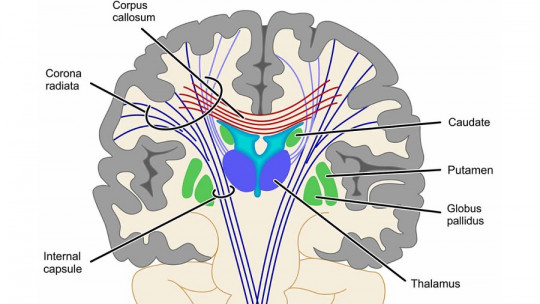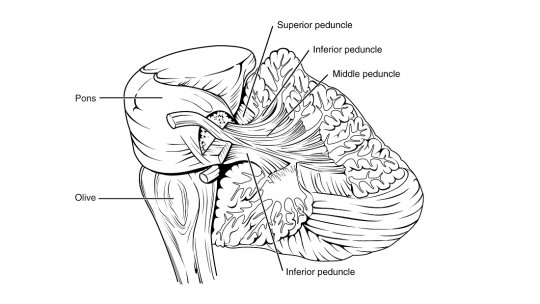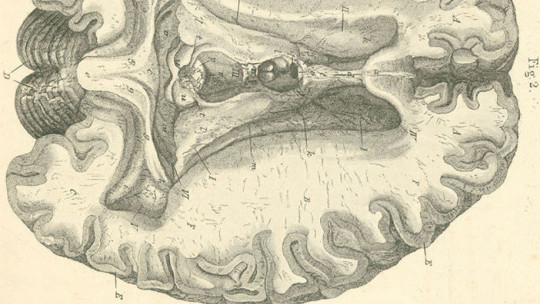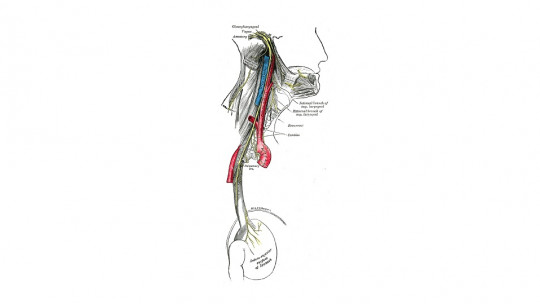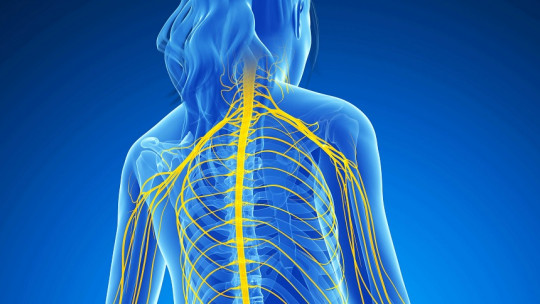The corona radiata is a key structure in the brain, playing a significant role in the communication pathways between various parts of the central nervous system. This bundle of nerve fibers is essential for motor and sensory information transmission, contributing to a wide array of functions necessary for everyday activities. In this article, we will explore the characteristics of the corona radiata, its functions, and its role in neurological health.
What is the Corona Radiata?
The corona radiata is a fan-like arrangement of white matter fibers in the brain that extends outward from the internal capsule. It is made up of long axonal fibers that carry sensory and motor signals between the cortex and other regions of the nervous system. The corona radiata is located in the cerebral hemispheres and connects the cerebral cortex to the brainstem and spinal cord. It plays a critical role in facilitating communication between the brain’s cortex and the lower centers of the nervous system.
The structure of the corona radiata looks like a radiant fan because of the arrangement of these fibers, which are highly organized to allow for efficient communication between different areas of the brain and spinal cord. This structure is vital for functions related to both voluntary movement and sensory processing.
Characteristics of the Corona Radiata
The corona radiata is composed primarily of myelinated axons, which help in the fast transmission of electrical signals. It is located between the cerebral cortex and the internal capsule, which serves as a pathway for motor and sensory information. Key characteristics include:
1. White Matter Structure
The corona radiata is made up of white matter, which contains bundles of myelinated nerve fibers. These fibers help transmit signals efficiently between different regions of the brain and spinal cord. The myelin sheath around the axons ensures that electrical impulses are conducted rapidly, allowing the nervous system to process information without delay.
2. Fan-like Appearance
One of the defining features of the corona radiata is its fan-like shape. The fibers of the corona radiata spread out from the internal capsule in a radiating pattern, resembling the spokes of a fan. This structure allows for the efficient transmission of motor and sensory signals across the brain.
3. Connection to the Internal Capsule
The corona radiata is closely connected to the internal capsule, a major white matter tract that contains both motor and sensory pathways. The fibers of the corona radiata converge as they pass through the internal capsule and travel to the brainstem and spinal cord. These fibers carry both ascending sensory signals and descending motor signals.
4. Pathways for Motor and Sensory Functions
The corona radiata houses both motor and sensory pathways. These fibers enable communication between the primary motor cortex and muscles throughout the body. Additionally, sensory fibers from the somatosensory cortex pass through the corona radiata to relay information from the body back to the brain for processing.
Functions of the Corona Radiata
The corona radiata is involved in numerous critical brain functions, thanks to its role in transmitting motor and sensory information. Here are some of the primary functions of this structure:
1. Motor Control
The corona radiata is vital for voluntary movement. Motor signals from the primary motor cortex in the brain travel down through the corona radiata, then pass through the internal capsule before reaching the brainstem and spinal cord. From there, these signals are transmitted to the muscles, enabling voluntary motor control of the body. This process is essential for activities like walking, talking, and using the hands.
Damage to the motor fibers in the corona radiata can lead to motor deficits, such as weakness or paralysis of specific muscle groups, depending on the area of the brain affected.
2. Sensory Processing
The corona radiata also plays a crucial role in sensory processing. Sensory information from the body, such as touch, pain, temperature, and proprioception, travels from the sensory receptors to the somatosensory cortex via the ascending sensory pathways within the corona radiata. Once the sensory information reaches the cortex, it is processed and interpreted, allowing us to perceive sensations and respond to stimuli.
3. Coordination Between the Cortex and Subcortical Areas
The corona radiata facilitates communication between the cerebral cortex and subcortical structures, such as the brainstem and spinal cord. This communication is essential for the integration of information from different parts of the nervous system, ensuring coordinated movements and proper sensory responses.
4. Cognitive Functions
Though the primary functions of the corona radiata are related to motor and sensory pathways, it also plays a role in higher cognitive functions, such as decision-making, problem-solving, and attention. Because the corona radiata connects different regions of the cerebral cortex, it helps integrate executive functions with sensory and motor information, which is crucial for complex tasks and thinking.
5. Visuomotor Coordination
The corona radiata is involved in the integration of visual and motor information, a function essential for tasks like grasping objects or tracking moving targets. It enables the visual cortex to communicate with the motor cortex, allowing individuals to perform activities that require precise hand-eye coordination, such as typing or playing sports.
Clinical Relevance of the Corona Radiata
The corona radiata is essential for normal brain function, and any damage to this area can have profound effects on a person’s motor and sensory abilities. Damage can occur due to various conditions, such as:
1. Stroke
One of the most common causes of damage to the corona radiata is a stroke, particularly an ischemic stroke, where blood supply to the brain is interrupted. A stroke affecting the corona radiata can result in motor deficits, such as hemiparesis (weakness on one side of the body), as well as sensory disturbances, such as numbness or loss of proprioception.
2. Multiple Sclerosis (MS)
In multiple sclerosis, the immune system attacks the protective myelin sheaths around the nerve fibers. Damage to the myelinated fibers in the corona radiata can impair the transmission of signals, leading to motor difficulties, sensory problems, and cognitive issues.
3. Traumatic Brain Injury (TBI)
Traumatic brain injury can lead to damage to the white matter fibers of the corona radiata. This can result in long-term neurological impairments, including deficits in movement coordination, sensory processing, and cognitive functions.
4. Dementia
Conditions like Alzheimer’s disease and other forms of dementia can lead to progressive degeneration of the white matter in the corona radiata. This degeneration affects the ability to transmit motor and sensory signals, contributing to difficulties in movement and changes in cognition.
Lesions that affect this brain structure
The corona radiata can be damaged by different causes, such as a stroke. Strokes involve small branches of blood vessels and those that affect the corona radiata are generally called subcortical effusions, lacunar effusions, or white matter effusions.
The reason why this region is called white matter is because it is highly myelinated, which means that it is protected by a special type of fatty tissue that insulates and helps nerve cells: myelin. They are also called subcortical strokes because they are found in the deeper, subcortical region of the brain, in contrast to more superficial or cortical regions.
People who suffer accidents or damage to an area such as the corona radiata suffer from what is called cerebrovascular disease, which is characterized by the presence of narrowed blood vessels and prone to developing blood clots in the brain.
Sometimes strokes involving the corona radiata can be relatively small and cause no symptoms. In this case, they are called silent attacks or, in English, “silent strokes.”
On the other hand, a stroke in a region such as the corona radiata can produce nonspecific symptoms, such as loss of autonomy and daily living skills a predictor of stroke, even when there are no significant signs on a brain MRI or CT scan.
In addition to a stroke, there are other causes of damage to the corona radiata, such as: brain tumors, spread of cancer by metastasis, brain hemorrhage, head trauma, or brain infections.
With everything, there are two keys to prevention: healthy lifestyle habits and regular medical care. Not smoking, eating a healthy diet, relaxing and avoiding stressful situations or addressing medical problems such as high cholesterol or hypertension are some of the protective factors that will help us prevent diseases and strokes.
FAQs: Corona Radiata – Characteristics and Functions
What is the corona radiata?
The corona radiata is a bundle of white matter fibers in the brain that connects the cerebral cortex to the internal capsule, brainstem, and spinal cord. It plays a crucial role in transmitting motor and sensory signals throughout the nervous system.
What are the main functions of the corona radiata?
The main functions of the corona radiata include motor control, sensory processing, coordination between the brain and spinal cord, and supporting higher cognitive functions like decision-making and problem-solving.
How does damage to the corona radiata affect the body?
Damage to the corona radiata can result in motor deficits like weakness or paralysis, as well as sensory disturbances like numbness. It can also affect cognitive abilities and coordination.
What conditions can cause damage to the corona radiata?
Conditions that can cause damage to the corona radiata include stroke, multiple sclerosis, traumatic brain injury, and dementia.


